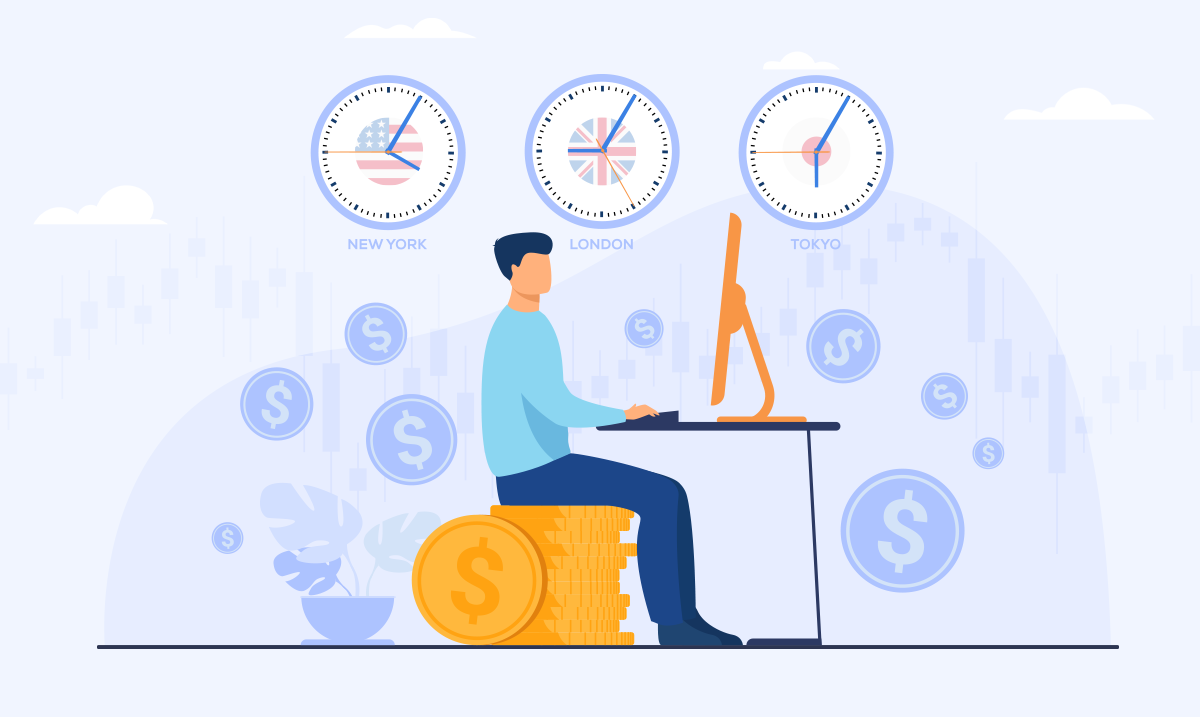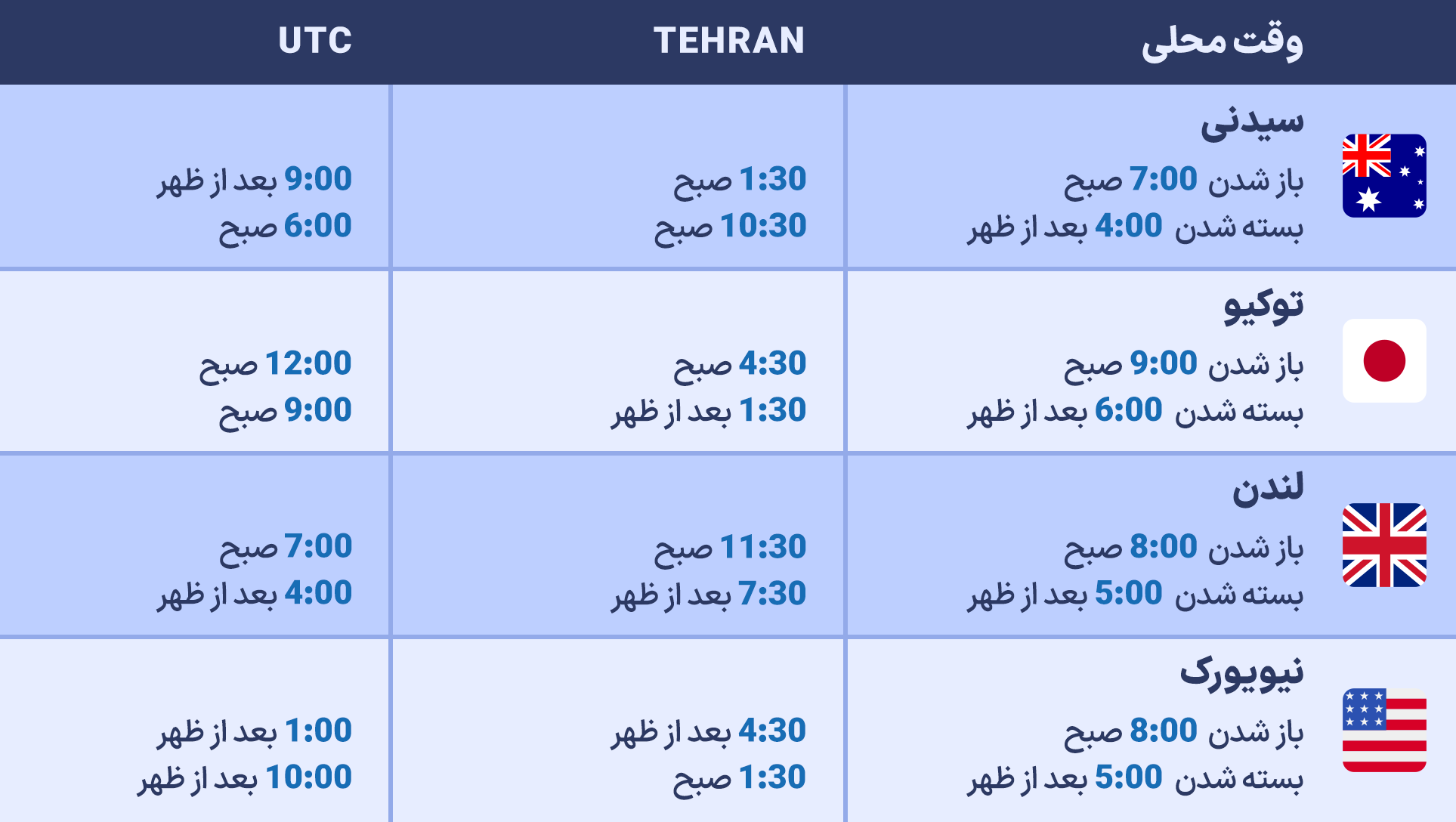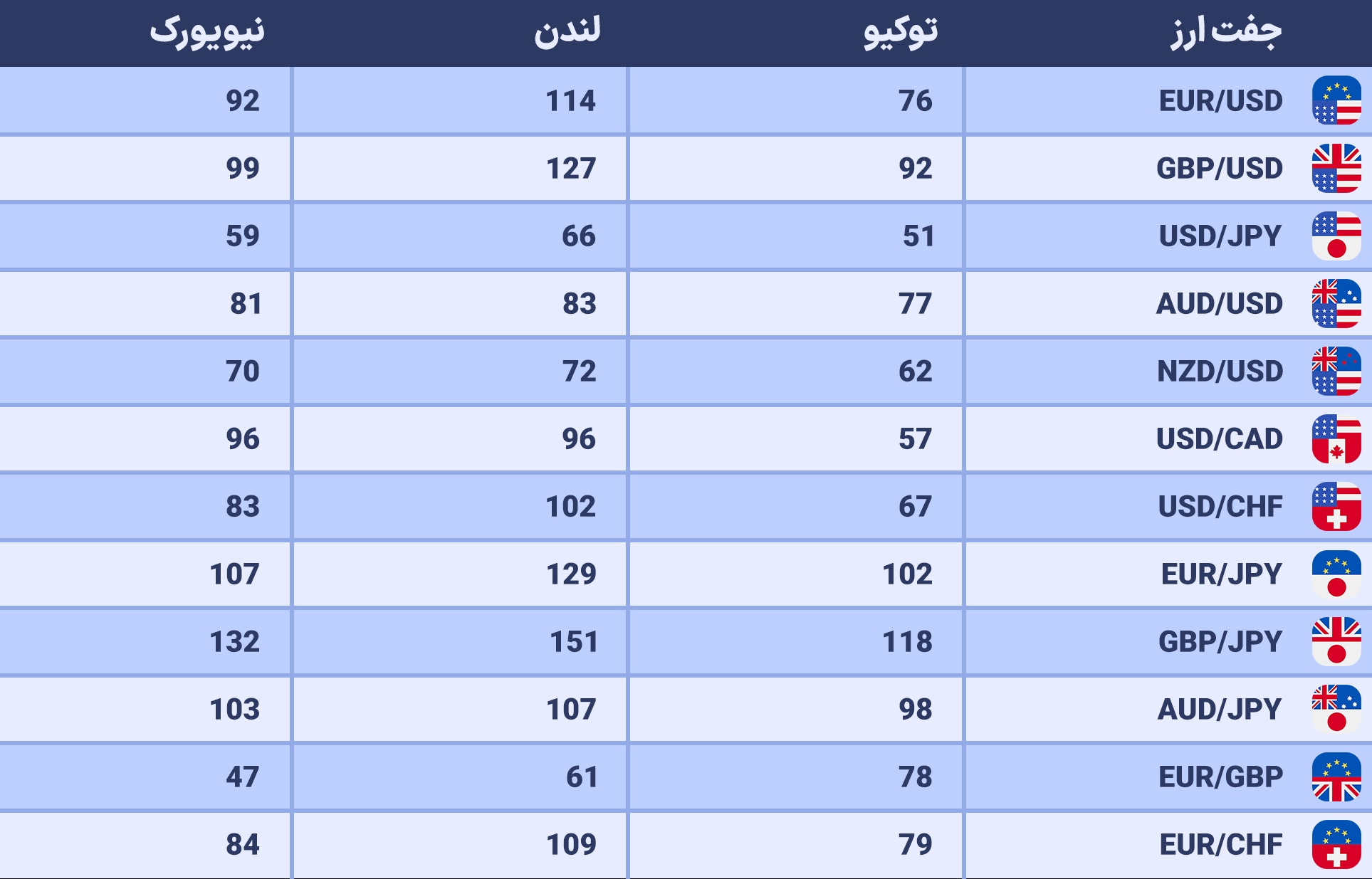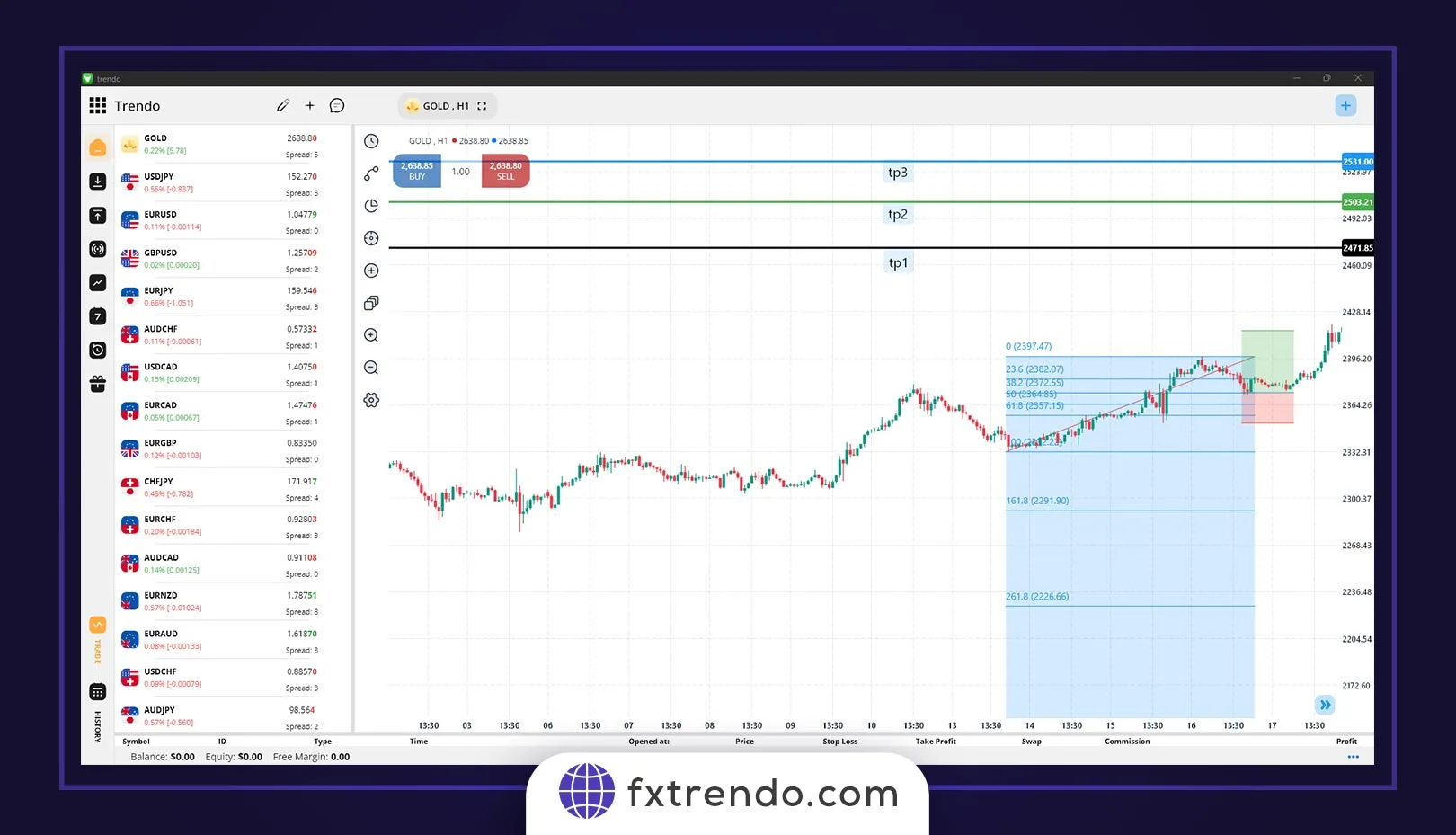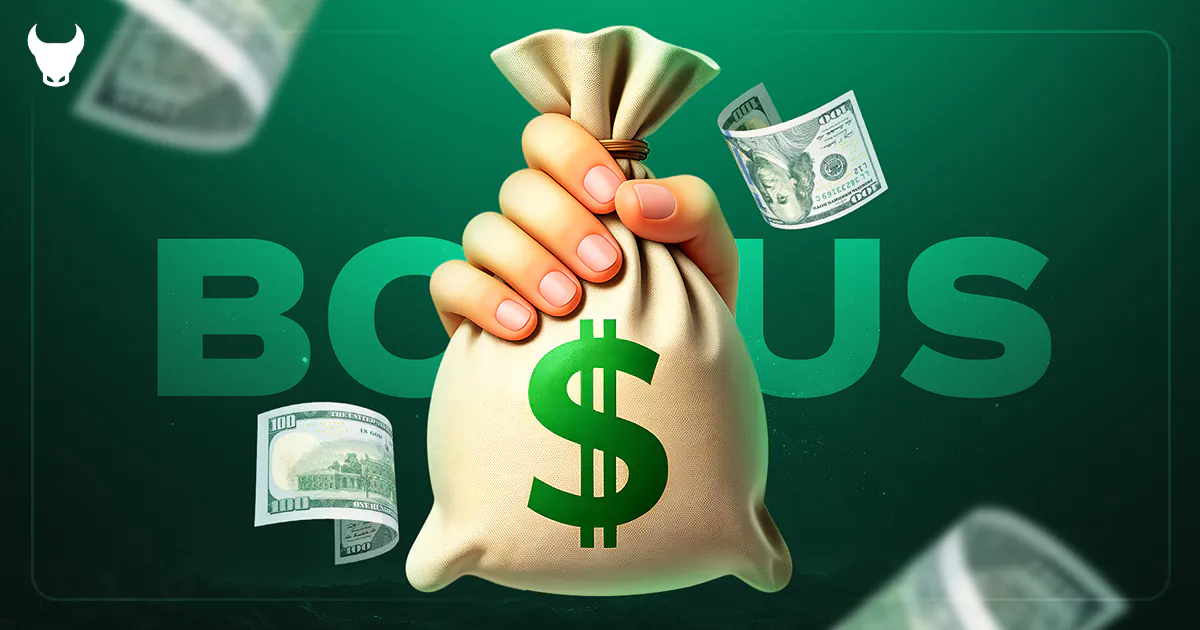سشنهای معاملاتی بازار فارکس (Forex Trading Sessions) یا نسشتهای معاملاتی در بازار فارکس، یکی از مفاهیم مهمِ مقدماتی در آموزش معاملهگری است که هر تریدری باید کاملاً با آن آشنا باشد و در معاملات خود آن را مدنظر داشته باشد. اگرچه فارکس (FX) یک بازار ۲۴ساعته است، اما در تمام طول شبانهروز حرکتهای یکسانی ندارد و هر زمانی، مناسب ترید نیست. درست است که شما میتوانید در هر ساعتی از شبانهروز میتوانید معاملات خود را اجرا کنید، اما در ساعاتی از روز، دامنۀ حرکتی بازار بسیار کوچک است و تغییرات قیمتی کمی را شاهد هستیم. برای درک کامل این موضوع، شما باید با نشستهای معاملاتی در بازار فارکس آشنا باشید. با ما همراه باشید تا بهترین زمان برای معاملات فارکس را بررسی کنیم.
سشن معاملاتی فارکس چیست؟
زمانبندی درست، یکی از مهمترین عوامل موفقیت در بازار فارکس است و نقش تعیینکنندهای در سودآوری معاملات دارد. از لحاظ زمانی، یک روز کامل معاملاتی در بازار فارکس، به ۴ بخش اصلی تقسیم میشود، که عبارتاند از:
- نشست سیدنی (استرالیا)
- نشست توکیو (آسیا)
- نسشت لندن (اروپا)
- نشست نیویورک (آمریکا)
در واقع یک روز معاملاتی در بازار فارکس، با نشست سیدنی در استرالیا شروع میشود و با نشستهای توکیو در آسیا و لندن در اروپا ادامه پیدا میکند و در نهایت با جلسۀ معاملاتی نیویورک در آمریکا به پایان میرسد و سپس روز جدید با نشست سیدنی، مجدداً آغاز میشود. این چرخه در تمام روزهای هفته، بهجز شنبه و یکشنبه ادامه پیدا میکند و بههمین دلیل است که فارکس در ۲۴ساعت روز، باز است.
این چهار نشست معاملاتی، بهاین دلیل مهمتر از بقیۀ جلسات معاملاتی در دنیا هستند که بانکهای مرکزی بزرگ دنیا در این ساعات، شروع به دادوستد ارز در سطح بینالمللی میکنند و نقدینگی زیادی وارد بازارهای مالی میشود. در واقع همه چیز در بازارهای مالی، تحتتأثیر نقدینگی است. به هر جلسۀ معاملاتی که در آن یکی از این چهار بانک مرکزی بزرگ باز است، یک سشن معاملاتی (Trading Session) میگویند. بهعنوان یک معاملهگر حرفهای باید با تمام شسنهای معاملاتی آشنا باشید و ویژگی هر کدام را بدانید. هر یک از این سشنها باتوجه به فعالیت بانکها و معاملهگران بزرگ، دارای ویژگیهای منحصربهفردی است که میتواند در نحوۀ نوسانات بازار تأثیرگذار باشد. در ادامه این موضوع را کامل بررسی خواهیم کرد.
سشن معاملاتی سیدنی (استرالیا)
نشست معاملاتی سیدنی در قارۀ استرالیا، ساعت ۷صبح بهوقت سیدنی شروع میشود و تا ساعت ۱۶ بهوقت سیدنی باز است، بهعبارتی این نشست، ساعت ۱:۳۰صبح بهوقت تهران شروع میشود و تا ساعت ۱۰:۳۰صبح بهوقت تهران باز است. توجه داشته باشید که زمانهای اعلامی براساس ساعت تهران، در فصلهایی از سال بهدلیل جابهجایی ساعت، تغییر میکند و مطمئنترین راه برای بررسی نشست سیدنی، بررسی ساعت دقیق، بهتایم شهر سیدنی است. در سایر حالتها، معمولاً افراد دچار سردرگمی میشوند.
سشن معاملاتی سیدنی، نسبت به بقیۀ نشستهای معاملاتی، دارای کمترین حجم معاملاتی است و معمولاً مارکت در این تایم، نوسانات کمی را تجربه میکند، مگر آنکه خبر مهمی منتشر شده باشد و سنتیمنت مارکت، هیجانی باشد.
اگر قصد ترید در سشن معاملاتی سیدنی را دارید، توصیه میشود نمادهایی را معامله کنید که یک طرف آنها، ارز AUD یا NZD باشد؛ زیرا این نمادها در این نشست، نسبت به بقیۀ نمادها، نوسانات بیشتری دارند. برای مثال نمادهای AUDUSD و NZDUSD بهترین گزینهها برای معامله در جلسۀ استرالیا هستند. توصیه میشود برای معامله در این سشن، حتماً زمان دقیق انتشار اخبار اقتصادی مربوط به این دو ارز را نیز مدنظر داشته باشید، زیرا این اخبار، ممکن است نوسانهای بزرگی در مارکت ایجاد کنند.
سشن معاملاتی توکیو (آسیا)
نشست معاملاتی توکیو در قارۀ آسیا، ساعت ۹صبح بهوقت توکیو شروع میشود و تا ساعت ۱۸ بهوقت توکیو باز است، بهعبارتی این نشست، ساعت ۴:۳۰صبح بهوقت تهران شروع میشود و تا ساعت ۱۳:۳۰ بهوقت تهران باز است. توجه داشته باشید که زمانهای اعلامی براساس ساعت تهران، در فصلهایی از سال بهدلیل جابهجایی ساعت، تغییر میکند و مطمئنترین راه برای بررسی نشست توکیو، بررسی ساعت دقیق بهتایم شهر توکیو میباشد.
سشن معاملاتی توکیو دارای حجم معاملاتی بیشتری نسبت به سشن سیدنی است و معمولاً در این تایم، مارکت نوسانات بیشتری نسبت به جلسۀ استرالیا دارد. در این سشن، علاوهبر بانک مرکزی ژاپن، بانکهای مرکزی بزرگی مانند بانک سنگاپور و هنگکنک نیز باز است.
اگر قصد ترید در سشن معاملاتی آسیا را دارید، توصیه میشود نمادهایی را معامله کنید که یک طرف آنها، ارز JPY باشد؛ زیرا این نمادها در این نشست، نسبت به بقیۀ نمادها، نوسانات بیشتری دارند. برای مثال نمادهای EURJPY و USDJPY بهترین گزینهها برای معامله در جلسۀ توکیو هستند. برای معامله در این سشن، حتماً زمان دقیق انتشار اخبار اقتصادی ژاپن را مدنظر داشته باشید، زیرا این اخبار، ممکن است نوسانهای بزرگی در مارکت ایجاد کنند.
سشن معاملاتی لندن (اروپا)
نشست معاملاتی لندن در قارۀ اروپا، ساعت ۸صبح بهوقت لندن شروع میشود و تا ساعت ۱۷ بهوقت لندن باز است، بهعبارتی این نشست، ساعت ۱۱:۳۰صبح بهوقت تهران شروع میشود و تا ساعت ۲۰:۳۰ بهوقت تهران باز است. توجه داشته باشید که زمانهای اعلامی براساس ساعت تهران، در فصلهایی از سال بهدلیل جابهجایی ساعت، تغییر میکند و مطمئنترین راه برای بررسی نشست لندن، بررسی ساعت دقیق بهتایم شهر لندن میباشد.
سشن معاملاتی لندن بزرگترین و مهمترین سشن معاملاتی در بازار است و حدود ۳۴ درصد از حجم معاملات روزانه، متعلق به سشن معاملاتی لندن و اروپاست. در این سشن، علاوهبر بانک مرکزی انگلیس، بانکهای مرکزی بزرگی مانند بانک مرکزی آلمان، ایتالیا، فرانسه و اسپانیا نیز باز است. بسیاری از معاملهگران در سراسر دنیا، در تایم لندن معاملات خود را انجام میدهند. اگر شما نیز قصد معاملهگری روزانه در فارکس را دارید، نشست لندن یکی از بهترین گزینهها برای شماست.
همچین برای ترید در این نشست، توصیه میشود نمادهایی را معامله کنید که یک طرف آنها، ارزهای EUR و GBP یا CHF باشد؛ زیرا این نمادها در سشن لندن، نسبت به بقیۀ نمادها، نوسانات بیشتری دارند. برای مثال نمادهای EURUSD و GBPUSD بهترین گزینهها برای معامله هستند. برای معامله در این سشن، حتماً زمان دقیق انتشار اخبار اقتصادی اروپا و انگلیس را مدنظر داشته باشید، زیرا این اخبار، ممکن است نوسانهای بزرگی در مارکت ایجاد کنند.
بیشتر بخوانید:
نیوز تریدینگ یا معاملهگری با اخبار در فارکس
سشن معاملاتی نیویورک (آمریکا)
نشست معاملاتی نیویورک در قارۀ آمریکا، ساعت ۸صبح بهوقت نیویورک شروع میشود و تا ساعت ۱۷ بهوقت نیویورک باز است، بهعبارتی این نشست، ساعت ۱۶:۳۰ بهوقت تهران شروع میشود و تا ساعت ۰۱:۳۰صبح بهوقت تهران باز است. توجه داشته باشید که زمانهای اعلامی براساس ساعت تهران، در فصلهایی از سال بهدلیل جابهجایی ساعت، تغییر میکند و مطمئنترین راه برای بررسی نشست نیویورک، بررسی ساعت دقیق بهتایم شهر نیویورک است.
در سشن نیویورک، بهدلیل تأثیرگذاری بسیار بالای اقتصاد آمریکا در جهان و اهمیت دلار در معاملات فارکس، تقریبا تمامی ارزها بیشترین نوسان را دارند. در سشن معاملاتی آمریکا، بازار نوسانات بالایی دارد که فرصت معاملاتی بسیار خوبی برای معاملهگران روزانۀ فارکس محسوب میشود. در سشن نیویورک مهمترین دادههای اقتصادی بازار فارکس یعنی دادههای مربوط به دلار آمریکا (USD) منتشر میشود، بههمین دلیل باید زمان دقیق انتشار اخبار دلار را مدنظر داشت. برای کار میتوانید به تقویم فارکس در پلتفرم اختصاصی ترندو یا وبسایت بروکر، مراجعه کنید.
اگر قصد ترید در سشن معاملاتی آمریکا را دارید، توصیه میشود نمادهایی را معامله کنید که یک طرف آنها، ارز USD باشد؛ زیرا این نمادها در این نشست، نسبت به بقیۀ نمادها، نوسانات بیشتری دارند. برای مثال نمادهای EURUSD و XAUUSD بهترین گزینهها برای معامله در جلسۀ نیویورک هستند.
بیشتر بخوانید:
بررسی کامل یورودلار (EURUSD)، مهمترین جفتارز بازار فارکس
در جدول زیر، ساعت کاری سشنهای معاملاتی مهم فارکس را مشاهده میکنید.
تغییر ساعت تابستانی بازار فارکس
اگر قصد دارید معاملات روزانه در فارکس را دارید، به این نکته توجه داشته باشید که ساعت باز و بستهشدن سشنهای معاملاتی در ماههای اکتبر و نوامبر و ماههای مارس و آوریل متفاوت است؛ زیرا برخی از کشورها (مانند ایالات متحده، بریتانیا و استرالیا) ساعت رسمی خود را تغییر میدهند. همچنین تنها نشستی که تغییر ساعت تابستانی ندارد، نشست توکیو (ژاپن) میباشد. اگر دوست ندارید درگیر این ساعتها و محاسبات مربوط بهآن شوید، توصیه میشود تایم هر سشن را تنها از روی ساعت معاملاتی همان شهر، بررسی کنید؛ ساده و راحت!
همپوشانی سشنهای معاملاتی در فارکس
همپوشانی سشنهای معاملاتی در فارکس، به ساعاتی از روز گفته میشود که دو سشن معاملاتی بهصورت همزمان باز هستند. برای مثال، از ساعت ۱۱:۳۰صبح تا ۱۳:۳۰ بهوقت تهران، سشن توکیو و سشن لندن، همپوشانی دارند و از ساعت ۱۶:۳۰ تا ۲۰:۳۰ بهوقت تهران، سشن لندن و سشن نیویورک، همپوشانی دارند. همپوشانی سشنهای معاملاتی، شلوغترین زمانها در طول روز معاملاتی هستند، زیرا زمانی که دو بازار همزمان باز هستند، حجم بیشتری از معاملات وجود دارد، نمادها نوسانات بیشتری انجام میدهند و بدیهی است که فرصتهای معاملاتی سودآوری در این ساعات، به وجود میآید. همانطور که در جدول زیر هم مشاهده میکنید، سشن لندن و نیویورک معمولاً بیشترین نوسانات را دارند، بنابراین در همپوشانی این دو سشن، برای معاملهگرانی که قصد معاملات اسکالپ و کوتاهمدت دارند، فرصتهای مناسبی وجود خواهد داشت.
زمان مناسب معاملات در فارکس
زمان مناسب برای معاملهگری در فارکس برای هر تریدر میتواند متفاوت باشد و بازۀ زمانی یکسانی برای تمام معاملهگران توصیه نمیشود. شما باید براساس استراتژی خود، نمادهای معاملاتی و همچنین زمان رسمی کشور خود، بهترین تایم را برای ترید انتخاب کنید. برای مثال اگر قصد ترید روی ارز JPY را دارید، بهترین زمان برای شما، سشن معاملاتی آسیا میباشد، یا اگر قصد انجام معاملات کوتاهمدت و روزانۀ در نماد طلا (XAUUSD) را دارید، توصیه میشود، در سشن نیویورک یا لندن وارد بازار شوید. در تصویر زیر، ساعات معاملاتی سشنهای اصلی بازار فارکس را برای منطقۀ زمانی گرینویچ (GMT) مشاهده میکنید و از ساعات همپوشانی سشنها که در جدول نیز مشخص است، میتوانید برای معاملات اسکالپ استفاده کنید:
بیشتر بخوانید: انواع بازار مالی جهان و ساعت معاملات آنها
سخن پایانی
سشنهای معاملاتی (Trading Sessions) یکی از مفاهیم پایه در بازار فارکس است که باید بهصورت کامل با آن آشنا شوید و با دانستن ویژگی هر سشن فارکس، اقدام به ترید در آنها کنید. در این مقاله، ساعت سشنهای سیدنی، توکیو، لندن و نیویورک را همراه با نماد معاملاتی ویژۀ هر سشن بیان کردیم. لازمبهذکر است که توجه به سشنهای معاملاتی بیشتر برای معاملات روزانه کاربرد دارد و برای معاملات بلندمدت، تنها کافی است اخبار مهم را بررسی کرده و براساس استراتژی معاملاتی خود، مارکت را دنبال کنید.
سوالات متداول
۱. بیشترین حجم معاملات جفتارزها در بازار فارکس، متعلق به کدام سشن معاملاتی است؟
۲. مهمترین اخبار اقتصادی جهان و فارکس، در کدام سشن معاملاتی، اعلام میشود؟
۳. برای بررسی ساعت سشنها بهصورت آنلاین، از کدام سایتها میتوان استفاده کرد؟
۴. چرا بررسی سشنهای معاملاتی در فارکس اهمیت دارد؟
۵. مهمترین سشنهای فارکس کداماند؟
۶. نشست لندن چه ساعتی بهوقت ایران باز میشود؟
۷. نشست نیویورک، چه ساعتی بهوقت ایران باز میشود؟
